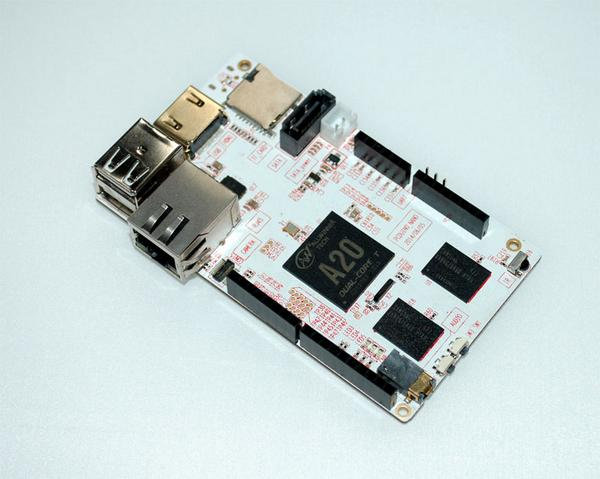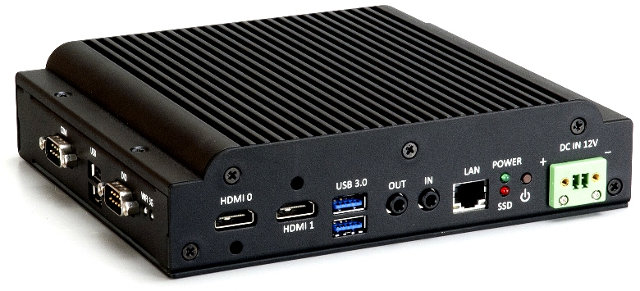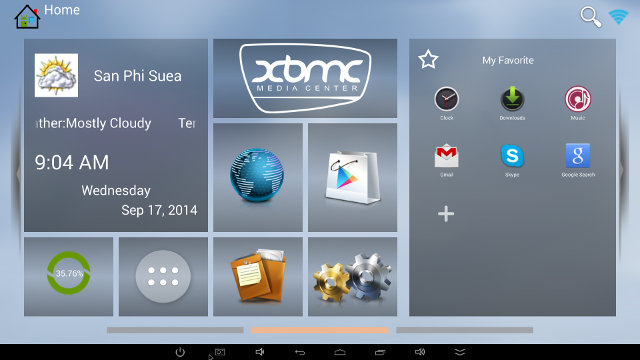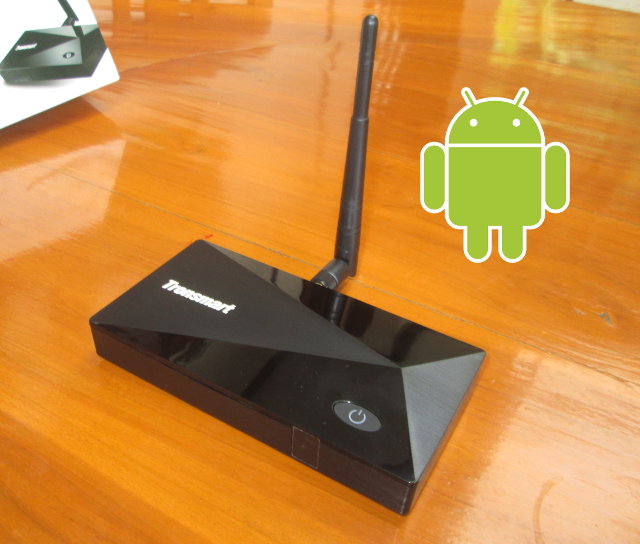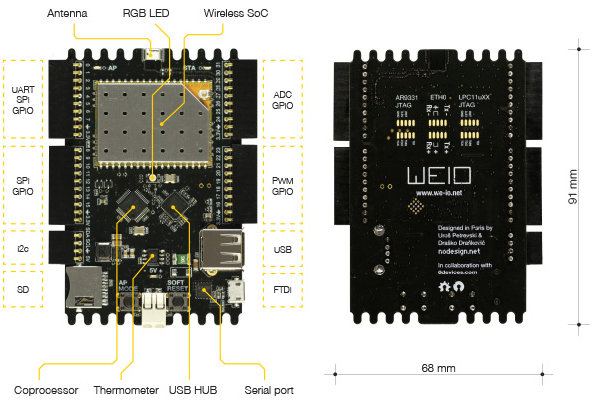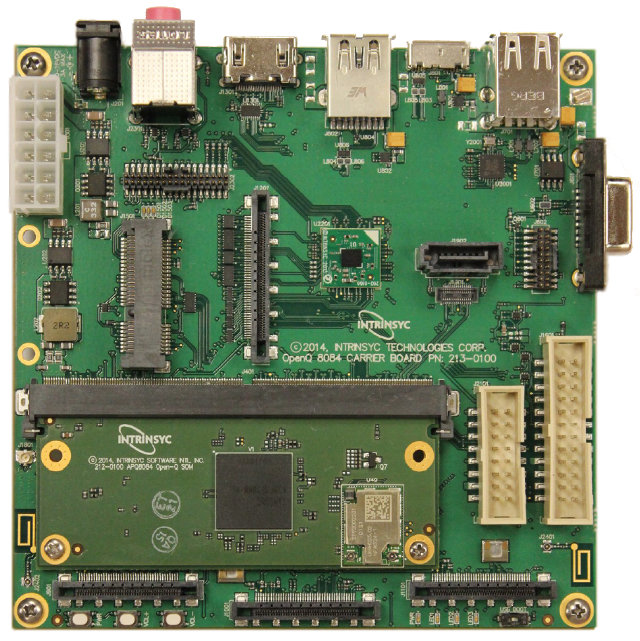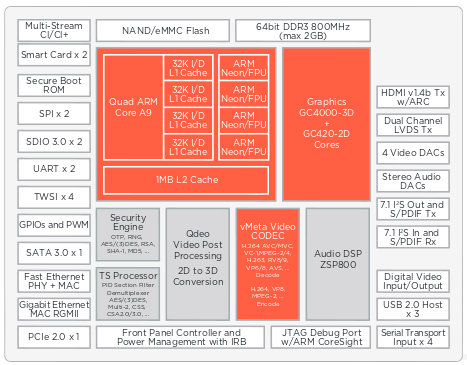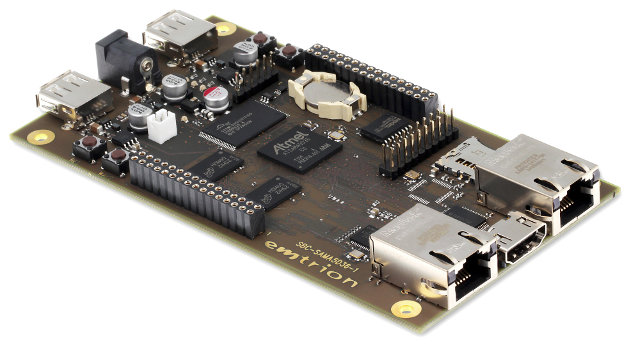Linksprite recently announced PcDuino3 Nano development board powered by AllWinner A20 dual core processor. PcDuino3 Nano is, as you can expect, a smaller and cheaper version the company’s PcDuino3 board without Wi-Fi module, LVDS header, and I2S interface. The board does not appear to support Li-Po batteries either, but it adds one extra USB host port compared to its big brother. pcDuino3 Nano specifications: SoC – AllWinner A20 dual core ARM Cortex A7 @ 1.0 GHz with Mali 400MP2 GPU System Memory – 1GB DRAM Storage – 4GB NAND Flash, SATA connector, and microSD card slot (up to 32GB) Video Output – HDMI 1.4 with HDCP support Audio Out – 3.5mm analog audio interface Connectivity – Gigabit Ethernet USB – 2x USB host, 1x USB OTG Expansion Headers – Arduino UNO extension interface with 14xGPIO, 2xPWM, 6xADC, 1xUART, 1xSPI, 1xI2C. Camera – MIPI camera support Misc – IR receiver Power […]
VIA ARTiGO 1300 Quad Core x86 Rugged Digital Signage Player
VIA has recently announced ARTiGO 1300, a rugged digital signage player powered by a VIA quad core E-Series x86 processor with VX11PH media processor, provides two HDMI outputs for independent displays, USB 3.0 ports, Gigabit Ethernet and more. Beside digital signage applications, it can also be used for kiosks, menu boards, HMIs, and other IoT applications. ARTiGO A1300 Specifications: Processor – VIA QuadCore E-Series @ 1.0 GHz Chipset – VIA VX11PH Media System Processor with Chrome 645/640 GPU for 2D/3D, and hardware video decoding support (MPEG-2, WMV9, VC-1 and H.264) System Memory – 1x DDR3 1066/1333 SODIMM socket (up to 8GB) Storage – Support 1x 2.5” SATA SSD/HDD, 1x mSATA SSD. 32Mbit Flash memory for AMI Aptio UEFI BIOS. Video Output – 2x HDMI ports supporting resolutions up to 1920 x 1080 pixels. Dual independent HDMI display support. Audio – VIA VT2021 High Definition Audio Codec, Line-in and Line-out Connectivity […]
Creating and Flashing an Android Image from Rockchip RK3288 SDK
Following up on my post explaining how to build Android for RK3288 TV box, I’ve generated a firmware image, and flashed it to Tronsmart Orion R28 Meta TV box to see if it could boot properly. There’s basically no information in the Andoird SDK explaining how to do basic things like building from source, and generating and flashing the resulting image, so I’d like to thanks Linuxium, Droidmote and Naobsd for their various tips. Since I’ve built everything from source, I’m using a Linux machine, but you should be able to create and flash the Android image in Windows using tools in RKTools/windows folder. First let’s copy the required, and freshly built, files to create the firmware:
|
1 2 3 4 |
cp rockdev/Image-rk3288/* RKTools/linux/Linux_Upgrade_Tool_v1.2/rockdev/Image/ cp RKTools/rk3288-3.10-uboot-data1G.parameter.txt RKTools/linux/Linux_Upgrade_Tool_v1.2/rockdev/parameter cp RKTools/bootloader/uboot-emmc/RK3288Loader_uboot_Apr212014_134842.bin RKTools/linux/Linux_Upgrade_Tool_v1.2/rockdev/ cd RKTools/linux/Linux_Upgrade_Tool_v1.2/rockdev/ |
We’ll also need to edit package-file follows (I only had to change the bootloader field):
|
1 2 3 4 5 6 7 8 9 10 11 12 13 14 |
# NAME Relative path # #HWDEF HWDEF package-file package-file bootloader RK3288Loader_uboot_Apr212014_134842.bin parameter parameter misc Image/misc.img kernel Image/kernel.img boot Image/boot.img recovery Image/recovery.img system Image/system.img backup RESERVED #update-script update-script #recover-script recover-script |
And now create the firmware file:
|
1 2 3 4 5 6 7 8 9 10 11 12 13 14 15 16 17 18 19 20 21 22 23 24 25 |
./mkupdate start to make update.img... Android Firmware Package Tool v1.0 ------ PACKAGE ------ Add file: ./package-file Add file: ./RK3288Loader_uboot_Apr212014_134842.bin Add file: ./parameter Add file: ./Image/misc.img Add file: ./Image/kernel.img Add file: ./Image/boot.img Add file: ./Image/recovery.img Add file: ./Image/system.img Add CRC... Make firmware OK! ------ OK ------ ********RKImageMaker ver 1.61******** Generating new image, please wait... Writing head info... Writing boot file... Writing firmware... Generating MD5 data... MD5 data generated successfully! New image generated successfully! Making update.img OK. Press any key to quit: |
The firmware file update.img can be flashed with upgrade_tool […]
How to Build Android 4.4 for Rockchip RK3288 Devices (Tronsmart Orion R28)
After blowing up my ATX power supply, and learning such things as “FULL” power supplies do exists, I finally managed to build Android for Tronsmart Orion R28 using the provided SDK. I haven’t tried to load it on the device yet, but the build could complete successfully after following the steps below in Ubuntu 14.04. The SDK is probably not specific to one device, so it might just also work on other RK3288 TV boxes and tablets. First download Android 4.4 SDK for RK3288, or use the one in the micro SD card provided with the Beta version of R28 Pro and Meta. Install some dependencies:
|
1 2 3 4 5 |
sudo apt-get install git-core gnupg flex bison gperf libsdl1.2-dev libesd0-dev libwxgtk2.8-dev \ squashfs-tools build-essential zip curl libncurses5-dev zlib1g-dev pngcrush schedtool libxml2 \ libxml2-utils xsltproc lzop libc6-dev schedtool g++-multilib lib32z1-dev lib32ncurses5-dev \ lib32readline-gplv2-dev gcc-multilib libswitch-perl gcc-arm-linux-gnueabi lzop libncurses5-dev \ libssl1.0.0 libssl-dev |
Extract the SDK:
|
1 |
tar xvf Orion_R28_SDK_doc.tar.gz |
And build the kernel first: Enter the kernel directory:
|
1 |
cd RK3288_R-BOX_ANDROID4.4.2-SDK_V1.0.0/kernel/ |
Change arch/arm/boot/dts/Makefile to use RK3288 device tree file instead of an RK3188 (may not be needed, but the build failed for me without that change…):
|
1 |
dtb-$(CONFIG_ARCH_ROCKCHIP) += rk3288-box.dtb |
It’s also quite […]
WeIO is an Open Source Hardware IoT Board Programmable from a Web Browser (Crowdfunding)
WeIO is an open source hardware board for the Internet of things with Wi-Fi connectivity and lots of I/Os designed by nodesign, a French based startup, in collaboration of 8devices, the makers of the Carambola boards. WeIO is powered by an Atheros AR9331 SoC running OpenWRT as well as an NXP LPC MCU for faster handling of I/Os and support for analog I/Os. One interesting aspect of this board is that it can be programmed via a web browser using HTML5 or Python, and it does not rely on the Cloud to store data. WeIO hardware specifications: SoC – Atheros AR9331 MIPS 24K Wireless SoC @ 400 MHz MCU – NXP LPC11xx ARM Cortex M0 MCU for analog I/O and real-time H/W interfaces System Memory – 64 MB DDR2 Storage – 16 MB flash + micro SD slot Connectivity – 802.11 b/g/n Wi-Fi with on-board antenna (AP and STA modes), […]
Intrinsyc OPEN-Q 8084 Development Kit Powered by Qualcomm Snapdragon 805 Processor
Inforce Computing IFC6540 was the first low cost development board powered by Qualcomm Snapdragon 805 processor I discovered a few months ago, but is currently “for pre-approved customers only and have not yet been released to public”. Intrinsyc has now launched their own Snapdragon 805 development kit called OPEN-Q 8084 based on a mini-ITX carrier board, and a SoM with 3GB RAM, and 16GB eMMC. The board target applications include ruggedized tablets, digital signage, government/public safety, medical, robotics, wearable displays, video streaming/conferencing, gaming systems, and in-flight entertainment. Specifications of APQ8084 Open-Q System-on-Module: SoC – Qualcomm Snapdragon 805 (APQ8084) quad core Krait 450 @ 2.5GHz, with Adreno 420 GPU @ 500MHz, Hexagon QDSP6 V5A (600MHz), and two ISPs for up to 55-megapixel stereoscopic 3D System Memory – 3GB PoP LPDDR3 RAM Storage – 16GB eMMC 5.0 flash, expandable to 64GB, micro SD signals, and SATA signals (via MXM connector) Connectivity – […]
Marvell Announces Quad Core ARMADA 1500 PRO 4K STB SoC with HEVC 10-Bit Support
Marvell has just announced a new member of its ARMADA 1500 family of multimedia processors with ARMADA 1500 PRO 4K (88DE3214), a quad-core ARM processor (12K DMIPS), with a Vivante GC3000 GPU, and Qdeo video processor supporting 4K (UHD) output and HEVC 10-bit codec. These processors will be used in smart TVs, set-top boxes (STB), over-the-top (OTT) boxes, thin-client devices, etc.. Details are scarce, but ARMADA 1500 PRO 4K could be an evolution of the ARMADA 1500 PRO processors with four Cortex A9 cores as shown above, but with a different GPU, 4K and HEVC support, and possibly some extra features for DRM. The key features mentioned by the company are as follows: 3840×2160 (UHD) at 60 frames per second 10 bit HEVC Video Decode Up to 12K DMIPs Quad Core ARM CPU Multi-core GPU, 8 shader Vivante GC3000 GPU Robust Security Engine – Security features include Trusted Rendering Path […]
Emtrion SBC-SAMA5D36 ARM Cortex A5 Linux Development Board Comes with Dual Ethernet, HDMI Output
A few months ago, I reviewed Atmel Xplained SAMA5D3 development board powered by SAMA5D36 Cortex A5 processor. The kit is supported by the Yocto Project, so I could build and run Poky distribution with a recent Linux kernel (it support mainline), it features Arduino compatible headers, and I found the board to be a nice platform for headless applications, or applications that require an LCD display. However, if you wanted to connect an HDMI display you’d be out of luck, unless you design your own LCD to HDMI add-on board. Emtrion SBC-SAMA5D36 could be an interesting alternative, as it features very similar specifications, but adds an HDMI output port. Emtrion SBC-SAMA5D36 specifications: MPU – Atmel SAMA5D36 single core Cortex-A5 @ 536 MHz System Memory – 256 MB RAM Storage – 512 MB NAND Flash, up to 16 MB NOR Flash, and micro SD Card socket Connectivity – 100Base-TX Ethernet, 10/100/1000Base-TX […]


